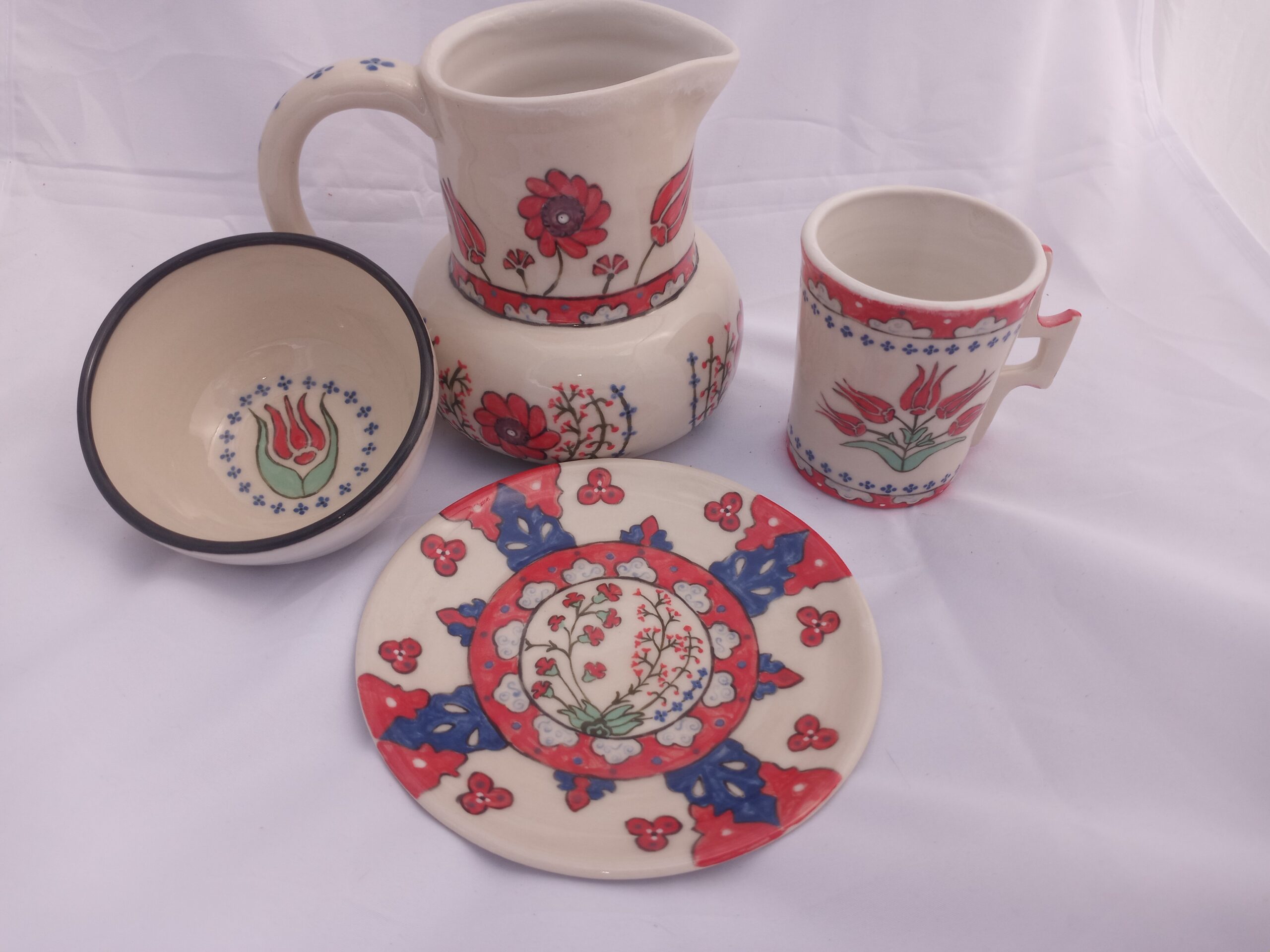Inspiration can come from many places.
While looking through museum ceramics for ideas on what to make next several years ago I came accross a beautifully painted cup. The colors weren’t very complex (blue, red, green, and black), but he beauty for me was in the repeating designs and nature based themes. A little bit of digging and I found the name for this beautiful design style, Iznik.
Iznik potteryis named from the town of Iznik located south-east of Istanbul and was a hub of ceramic wear including tiles, and serving wear. The Iznkik or Ottoman designs evolved over the course of time from blues and whites to the reds and greens I love. There are various reasons for the changes, if you would like to look into them as well as other fascinating facts of this design style I recommend the book Iznkik Pottery by John Carswell. I plan on writing up more on this topic in another blog, but for now I wanted to give just a brief introduction on this beautiful design style.
This art style can still be found referenced in Turkey to this day, as became clear when a friend brought be back a beautiful scarf from Istanbul.
I had been wanting to paint some pieces in this style for several years now and had actually started painting the marginalia, Heraldry, and Nasrid pottery all with the goal of learning to paint well enough to one day paint some pieces in this style.
The scarf gave me the inspiration I needed, and Athenaeum 2023 gave me the push to try my hand finally at this design. I focused on the circle medallions on the scarf with each piece (cup, bowl, plate, pitcher) representing one of these focal images slightly changed to be more historically accurate.
Iznik employs the repeating designs similar to the Nasrid, with the free form and vines in marginalia. I used the same segmenting techniques as I did in the Nasrid Pottery on the plates to give that structured feel.
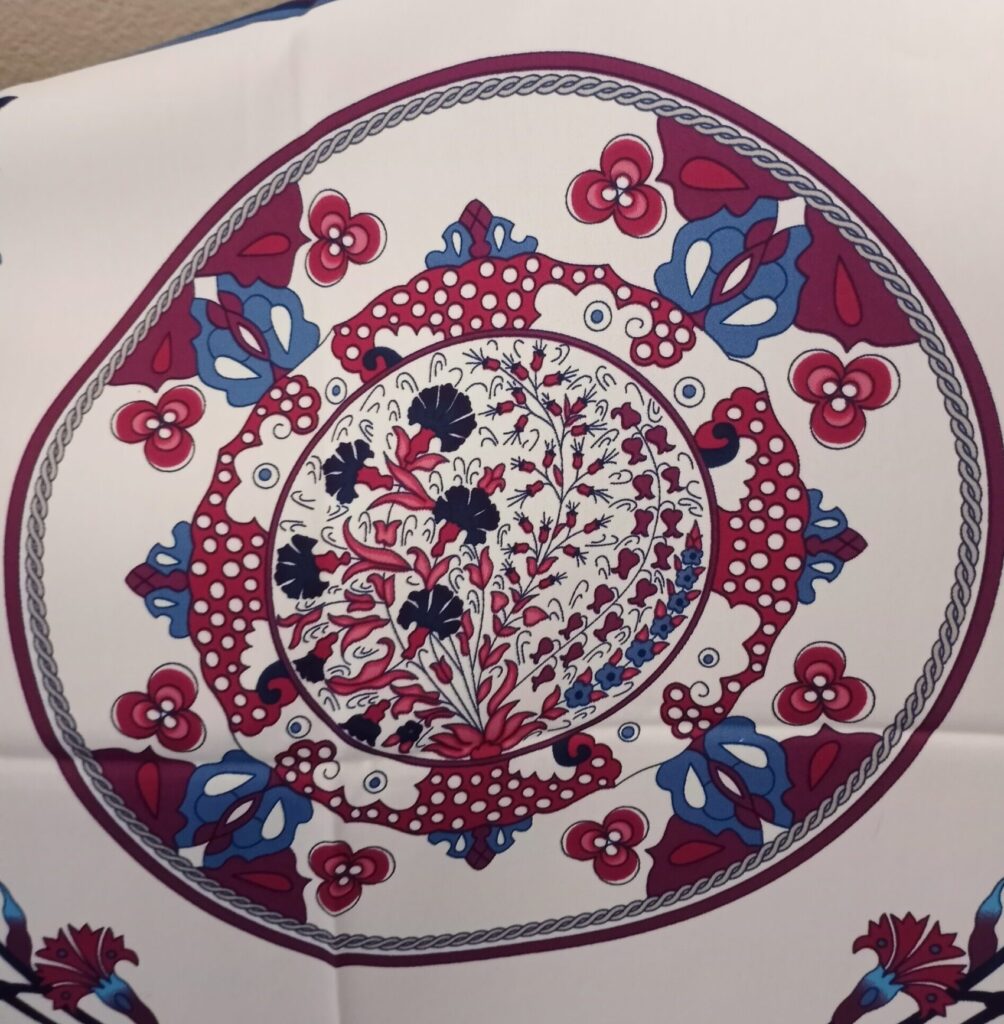
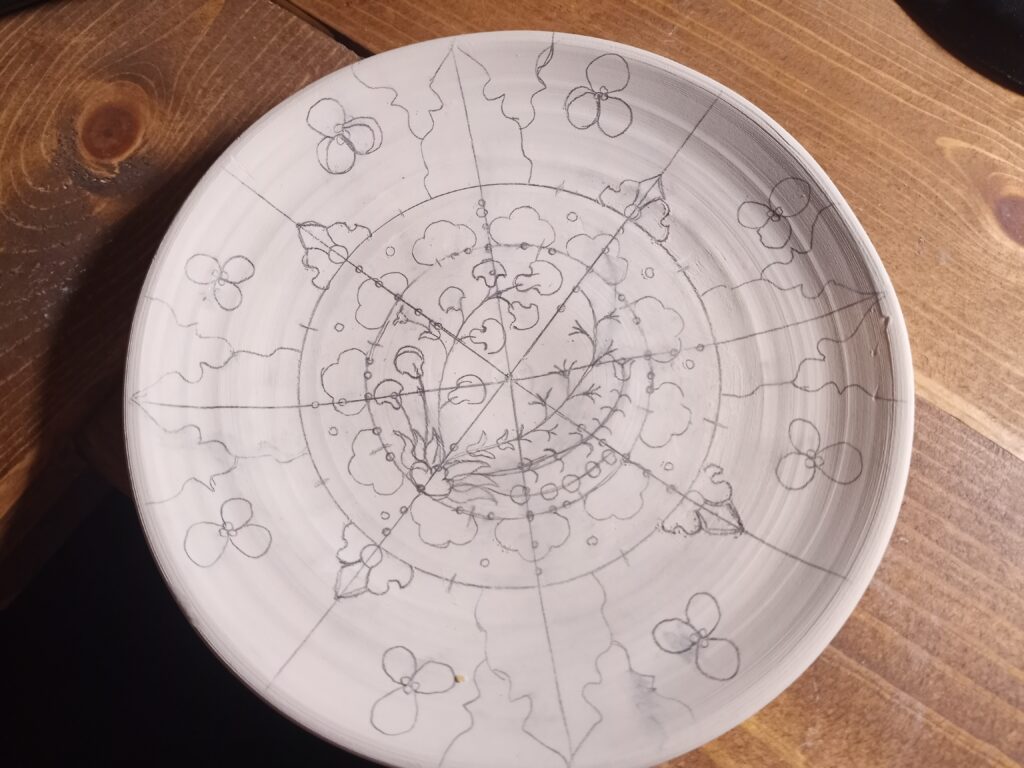
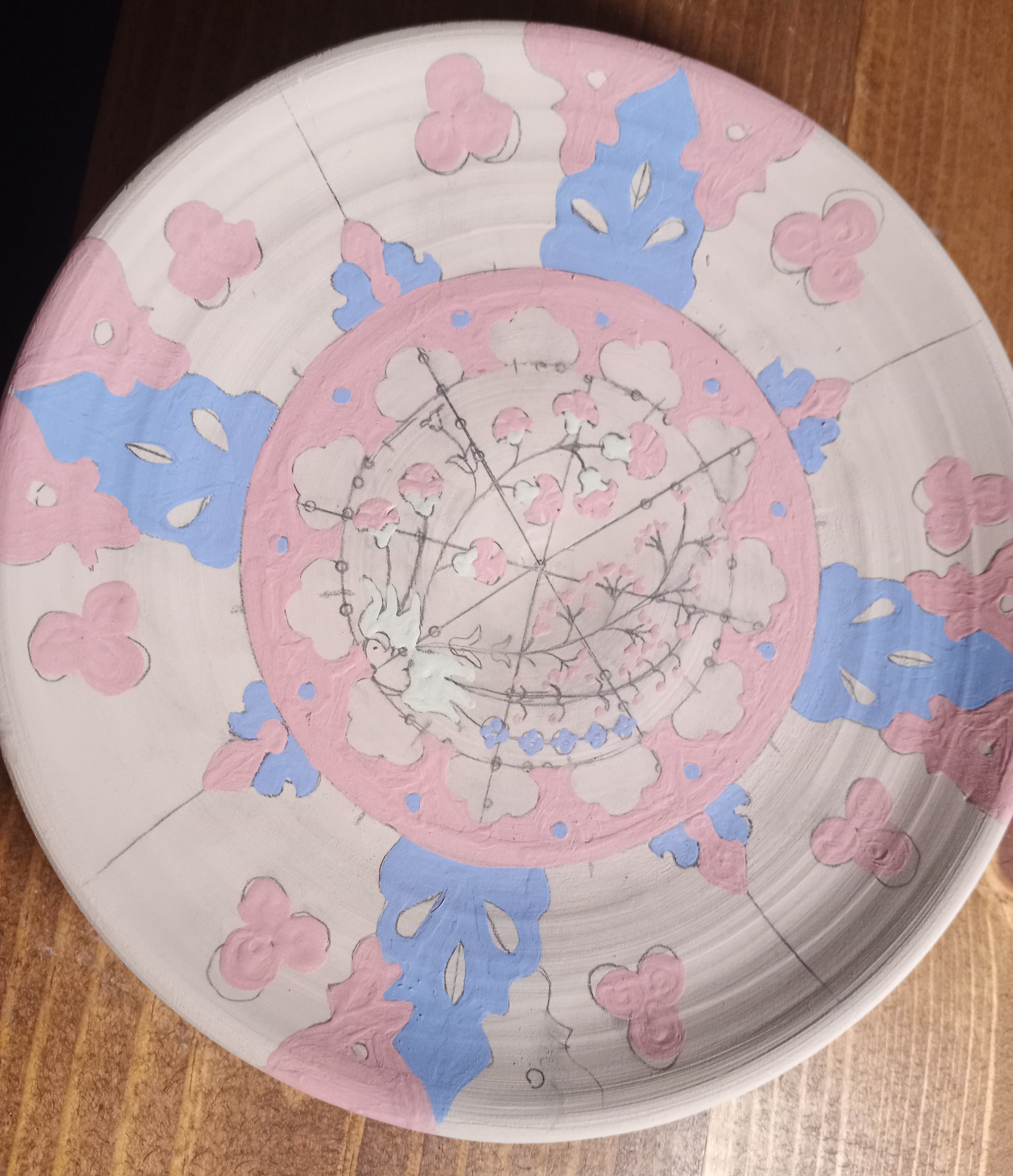
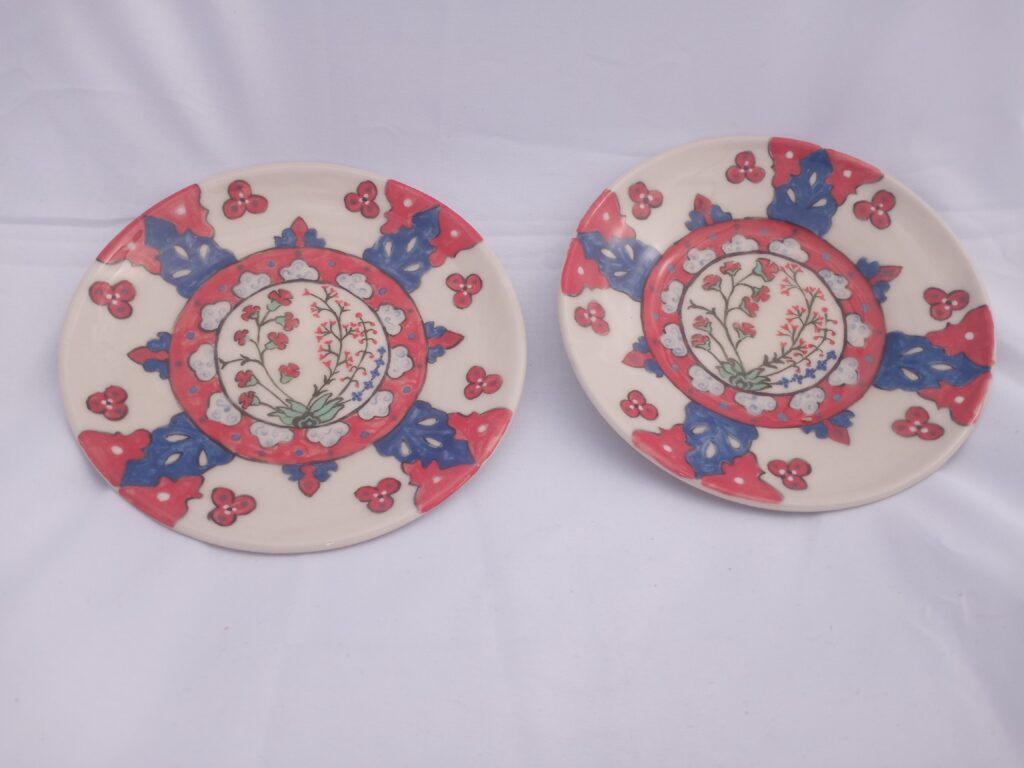
The cups were sectioned off in quarters, but due to the simpler nature of the design the further segmentation and design was not needed.
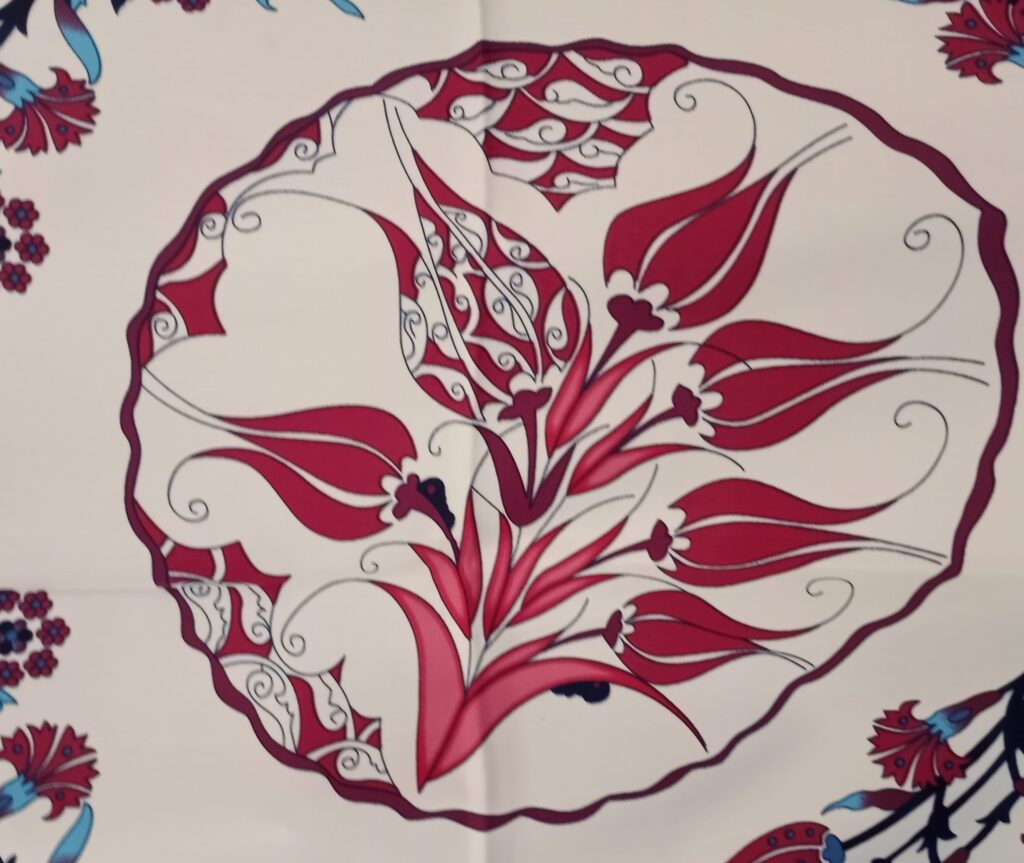
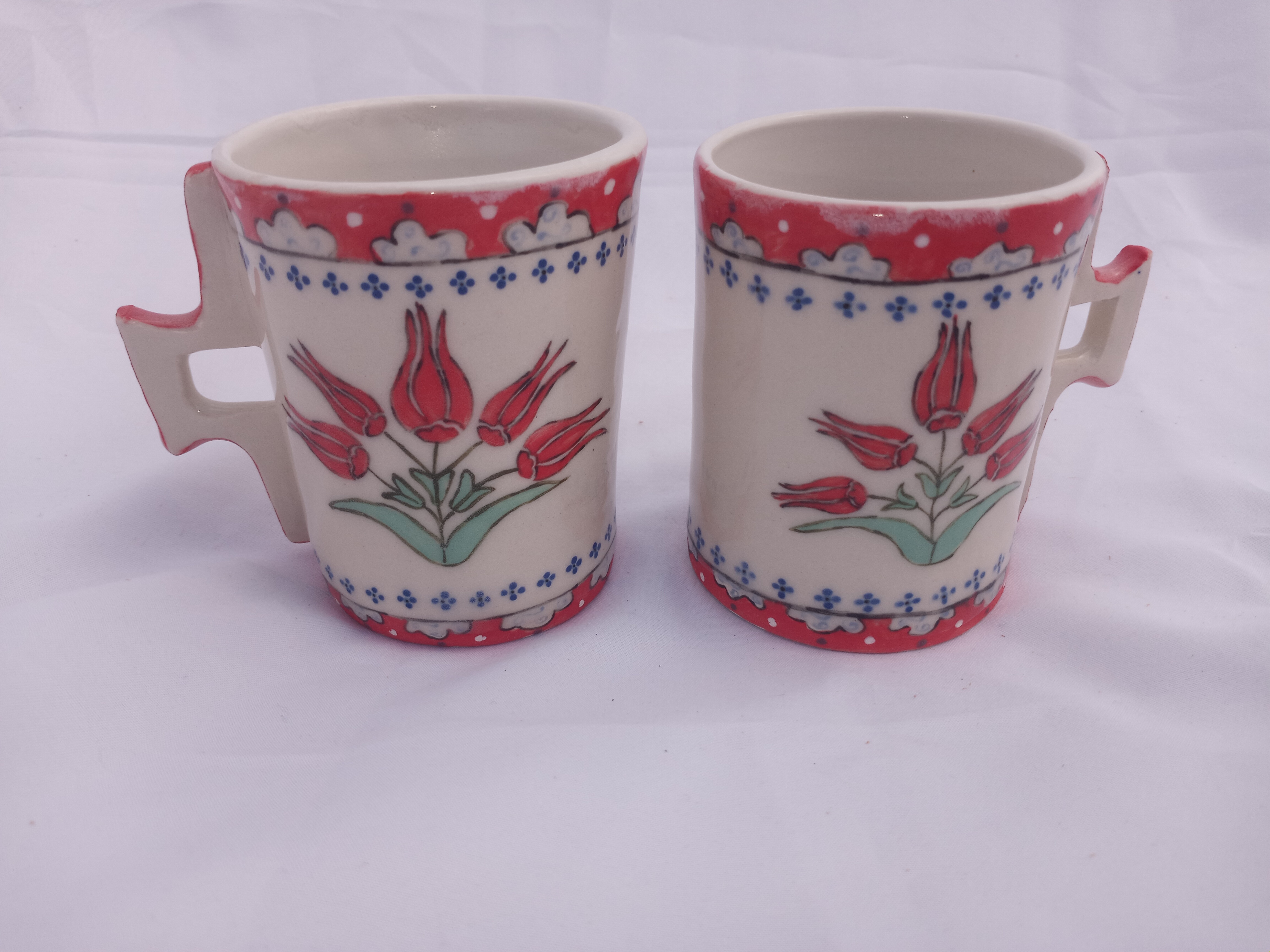
The bowls proved to be a problem. When I threw them, I did so without thinking as clearly towards the design stage and as such they were narrower and deeper then they should have been making it difficult to draw the designs. This caused a quick change in plans with a simple design on the bottom instead of the original complex design I had planned.
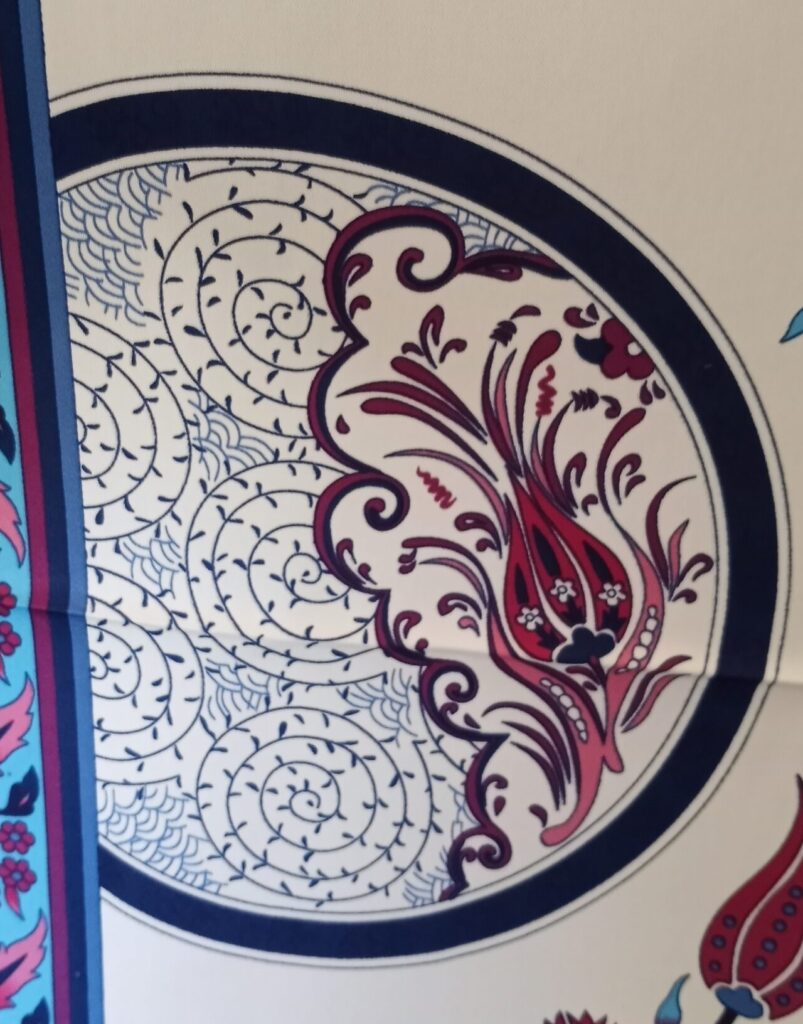
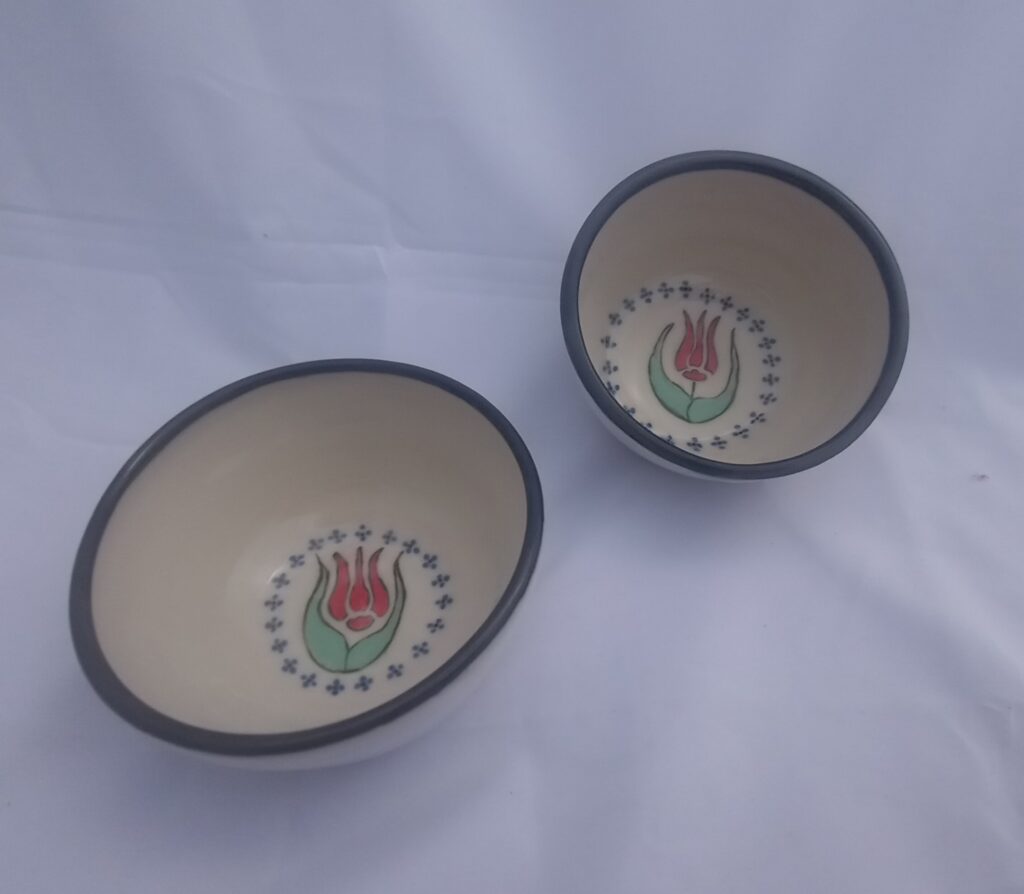
The pitcher was a problem from the throwing (the clay did not want to be that shape) to the handle attachment (it kept wanting to separate and came off all together in the green ware stage and was “glued on” with glaze). I am not as happy with how it ended up, and it will be re-made, but for my first pitcher of this shape and design it could have been worse.
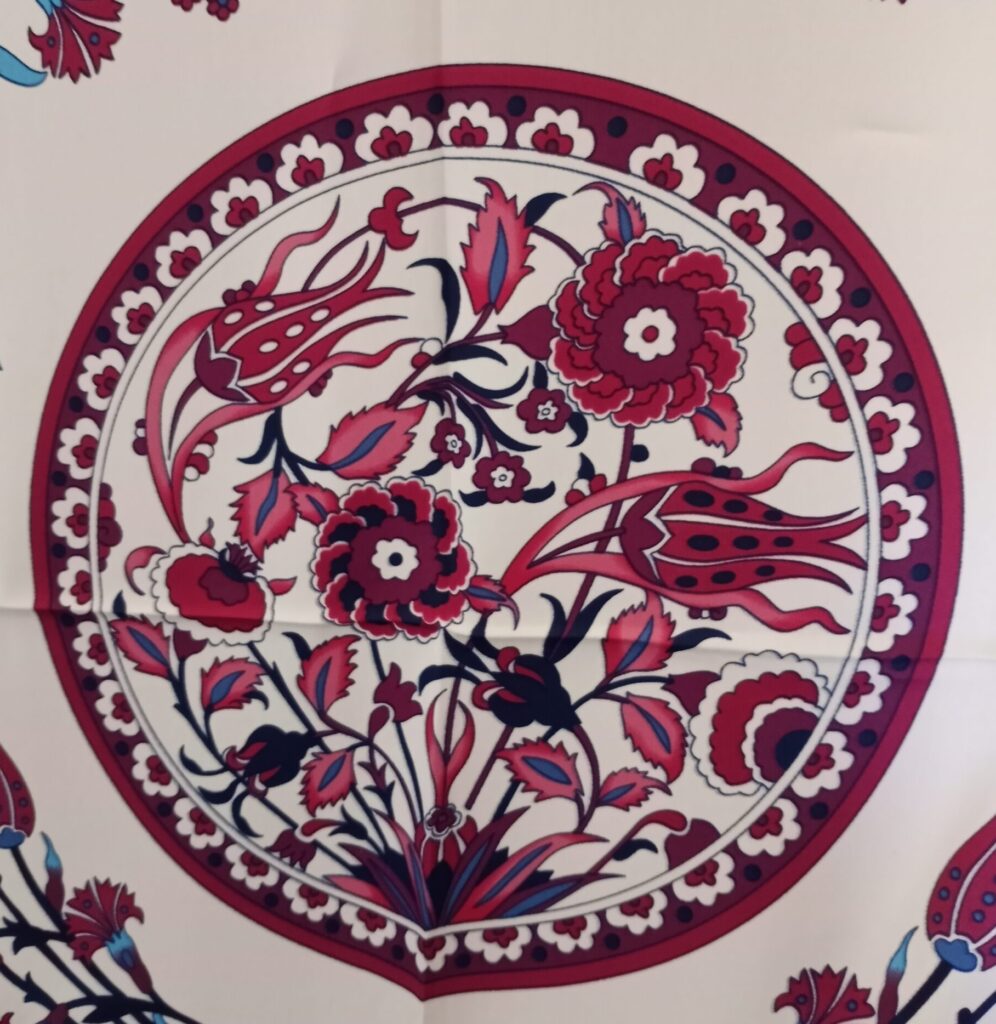
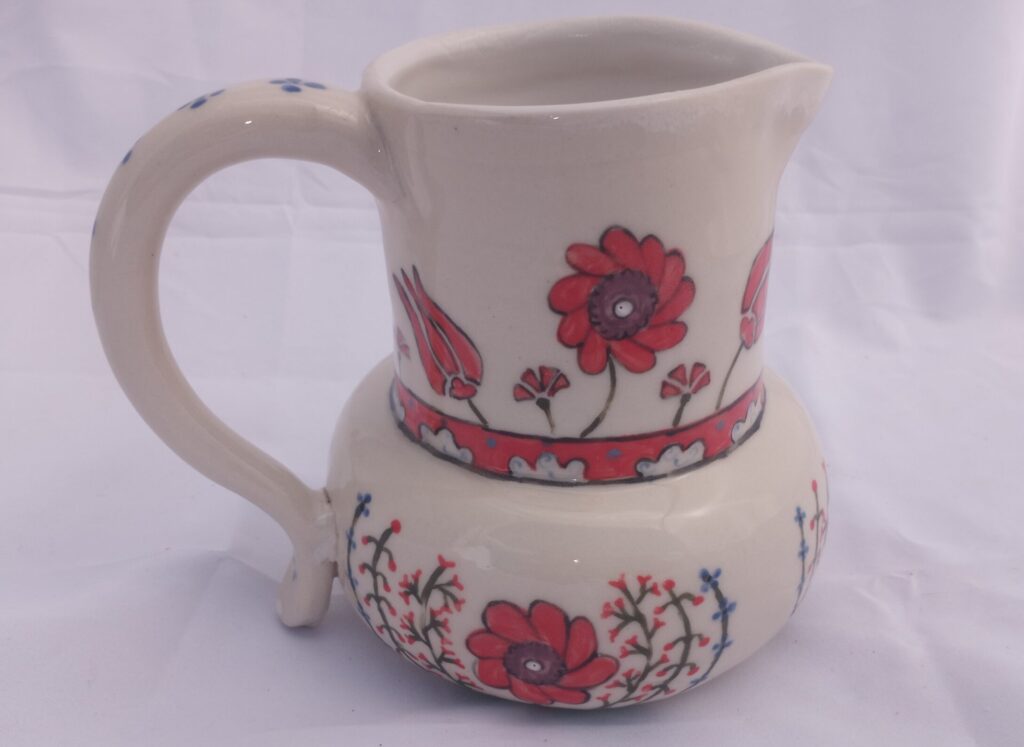
I even made a small piece as a thank you to my amazing friend who shares my love of the Ottoman culture and art, and whose thoughtful gift gave me the inspiration to try these pieces.
